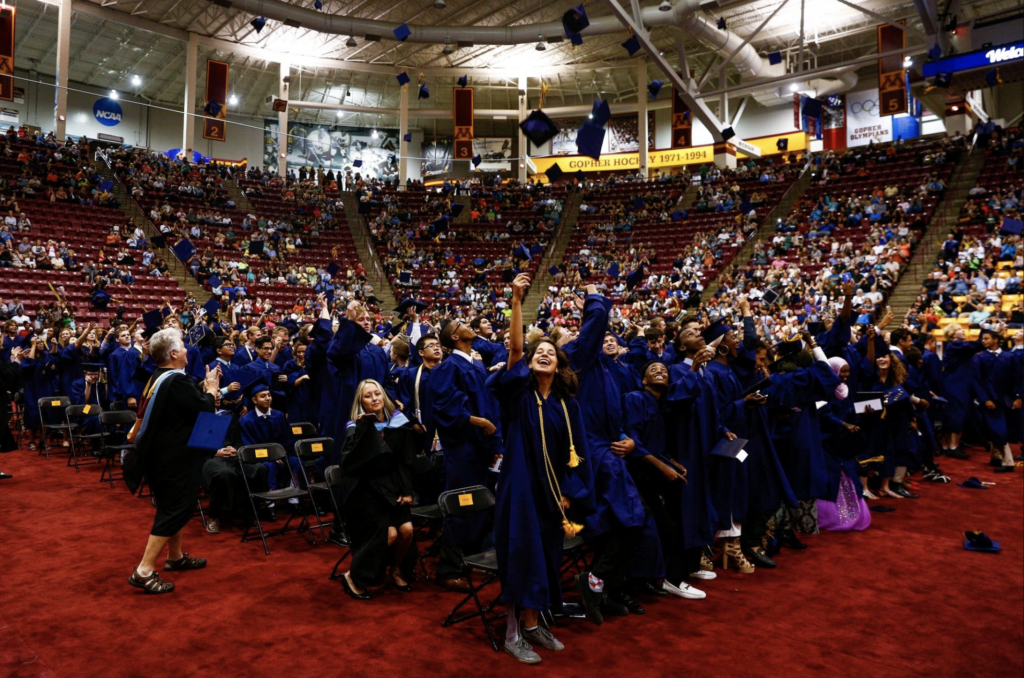Minnesota 4-year graduation rates slipped in 2023
Published 5:59 am Thursday, March 28, 2024

- John F. Kennedy High School graduates toss their caps in the air at the end of commencement in Bloomington. Evan Frost/MPR News 2016
By Elizabeth Shockman, Minnesota Public Radio News
The effects of closed schools and isolation due to the pandemic continue to affect Minnesota students. Newly released data released by the state Education Department shows the class of 2023 graduated at a rate of 83.3 percent, down from 83.6 percent for the class of 2022.
Part of that dip was driven by an increase in the “unknown rate” — students who were either incorrectly reported or not reported as enrolled elsewhere, the department said in a statement Thursday accompanying the new data. Those students may not be dropouts.
The overall data, though, shows graduation rates for English language learners and some students of color — among those most disproportionately affected by the pandemic — moving in the wrong direction.
Before the pandemic, Minnesota’s class of 2020 had a record high graduation rate of 83.8 percent. That rate has since fluctuated, falling in 2021 by half a percentage point to 83.3, inching back up in 2022 and falling last year back to where it was in 2021.
“The major thing that we really need to keep in mind is that the pandemic had a huge effect, and huge impacts, especially for our students of color,” said Julio Caesar, director of research and assessment for Bloomington Public Schools.
“We are now just starting to see what that impact is on our graduation rates, on the number of classes that students are failing, on the number of attendance days that our students are making it to school,” he added.
Despite years of pandemic-driven challenges, close to 60,000 Minnesota students graduated on a four-year-timeline last year, while nearly 4,000 earned diplomas within five, six or seven years.
Black students have seen a steady increase in five-year graduation rates since 2019.
In Bloomington, credit recovery programs are working to help students graduate on a four to seven-year timeline, Caesar said.
He noted the class of 2023 was in ninth grade when the pandemic closed schools. Caesar said he thinks Bloomington and the rest of the state will continue to see graduation rates wobble until students get the support they need in mental health and credit recovery.
“To be honest, I expect these numbers not to really increase much in the next couple of years,” Caesar said. “Until we get into that plateau of when (we get) the resources and the additional help started — especially for students of color — to make sure that we’re all back on track.”
Minnesota Education Commissioner Willie Jett is expected to brief reporters later Thursday on the latest data and the state’s efforts to boost graduation rates.


